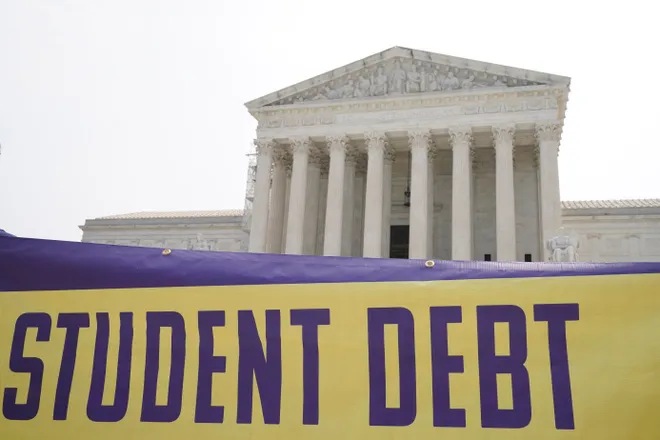Student loan repayments surge ahead of official restart, but many may still be scrambling
Student loan payments jumped ahead of pre-pandemic levels in the weeks ahead of payments becoming due again in October after a pause during COVID, according to Goldman Sachs economists.
Payments rose to about a $150 billion annualized rate, or about twice the pre-pandemic rate, they said, based on weekly payments to the federal Education Department.
How people handle student loans, which total $1.7 trillion spread across more than 40 million Americans, could be a barometer for which way the economy could be headed. Early voluntary payments could be seen as a sign of financially healthy consumers, but looking closer, Goldman Sachs says the situation may not be as rosy as it looks.
“Over the past few weeks, payments were creeping up,” said Goldman Sachs economist Alec Phillips. “People thought maybe it was a more positive sign for borrowers and consumers, maybe it meant some people were paying earlier than necessary, a good thing because that means they’re not having a hard time making payments. But now that (the amount being paid) is double (what it was pre-COVID), it’s hard to see that.”
Plan for mass student loan forgivenessinches forward.
Learn more: Best personal loans
Why have student loan repayments jumped?
The surge in payments is likely because a small share of borrowers was paying down principal on their loans before interest began accruing again on September 1, Phillips said.
“A widespread resumption of monthly payments is much less plausible, as the recent level of payments is higher than would be likely even if all borrowers began making monthly payments early,” he noted. “Survey data also suggest many borrowers might not make payments when they are due, let alone two months early.”
Surveys consistently show most Americans are already financially strapped after two years of high inflation. Of 2,059 borrowers surveyed by Credit Karma in late July, 53% were already struggling to pay their other bills, and 45% expected to go delinquent on their student loan payments once forbearance ends.

What will happen when borrowers’ first payment is due in October?
Americans will likely feel more pinched with the burden of another monthly bill, but “at least for now, I think the likelihood that you have severe adverse consequences from this are pretty low,” Phillips said.
The Biden administration’s plan for a so-called on-ramp to help borrowers readjust to paying student debt should help prevent catastrophe, he said.
During the 12-month grace period, borrowers won’t be reported to credit agencies or be considered delinquent if they miss payments. However, interest will continue to accrue on their balances.
Mark your calendar:Student loan payments to restart soon as pause ends: Key dates to remember.
The economy, though, will slow because people will have less to spend, Phillips said. He estimates the student loan payment restart should slow economic growth to 1.3% in the final three months of the year from a 2.8% clip in the prior three months.
Medora Lee is a money, markets, and personal finance reporter at USA TODAY. You can reach her atmjlee@usatoday.com and subscribe to our free Daily Money newsletter for personal finance tips and business news every Monday.
Disclaimer: The copyright of this article belongs to the original author. Reposting this article is solely for the purpose of information dissemination and does not constitute any investment advice. If there is any infringement, please contact us immediately. We will make corrections or deletions as necessary. Thank you.







